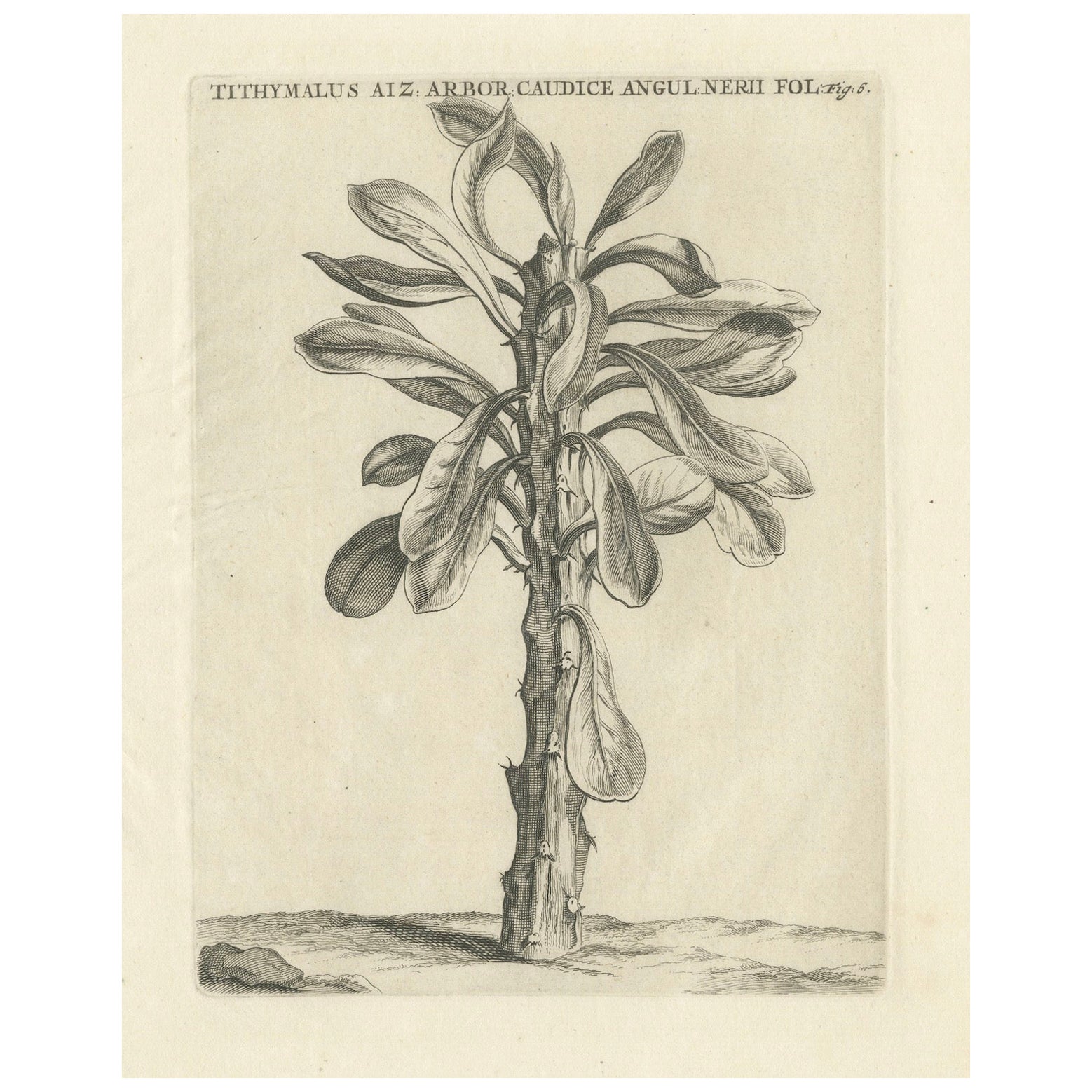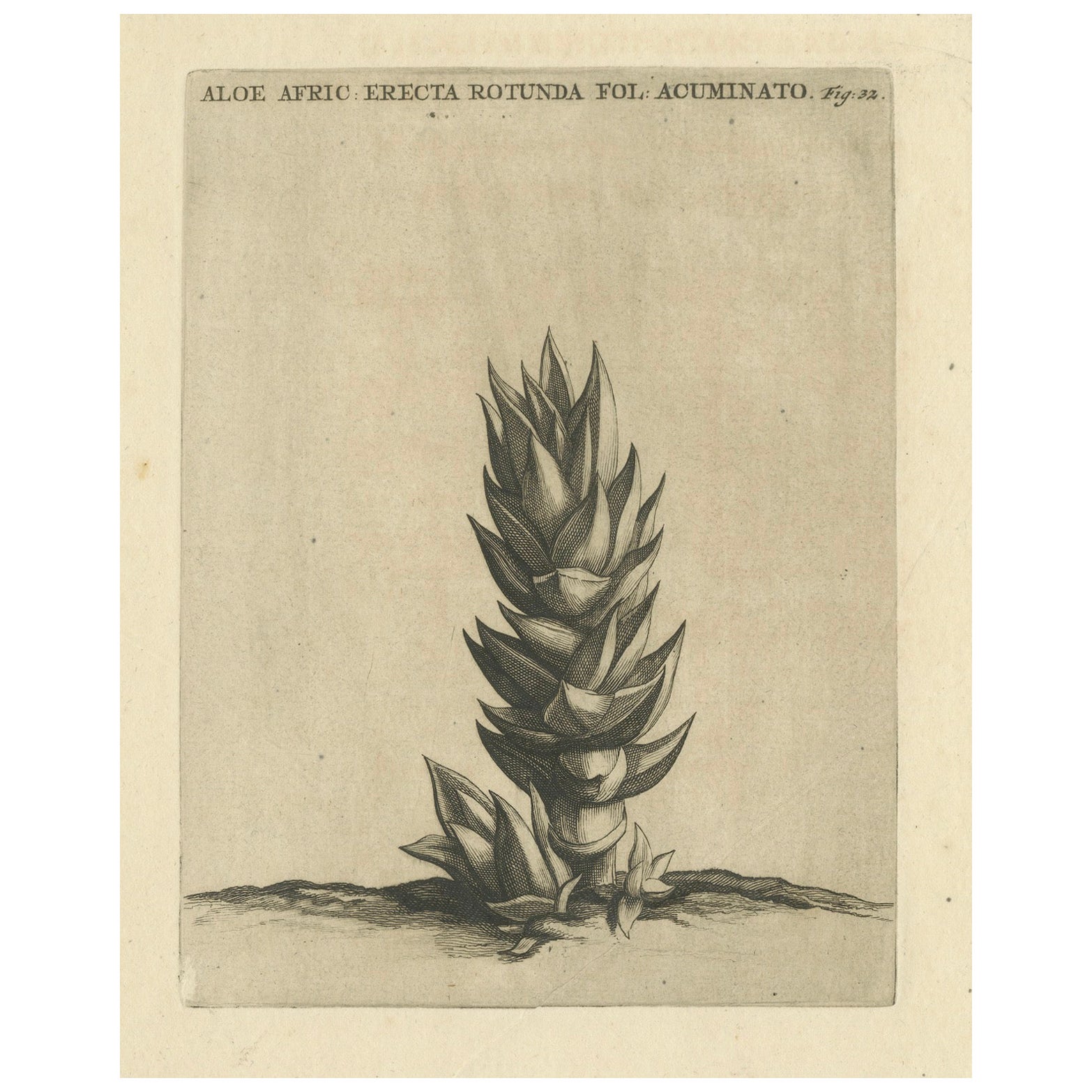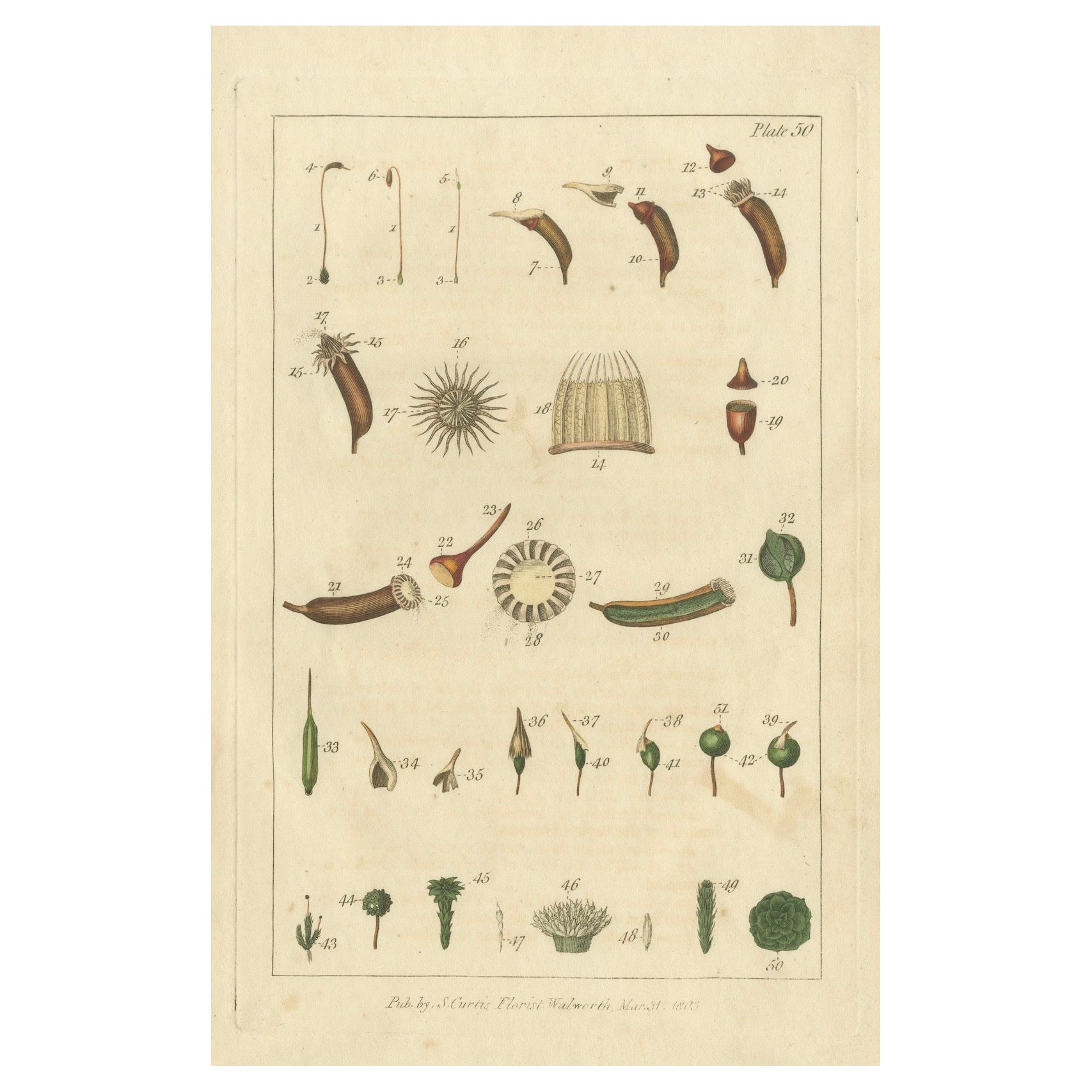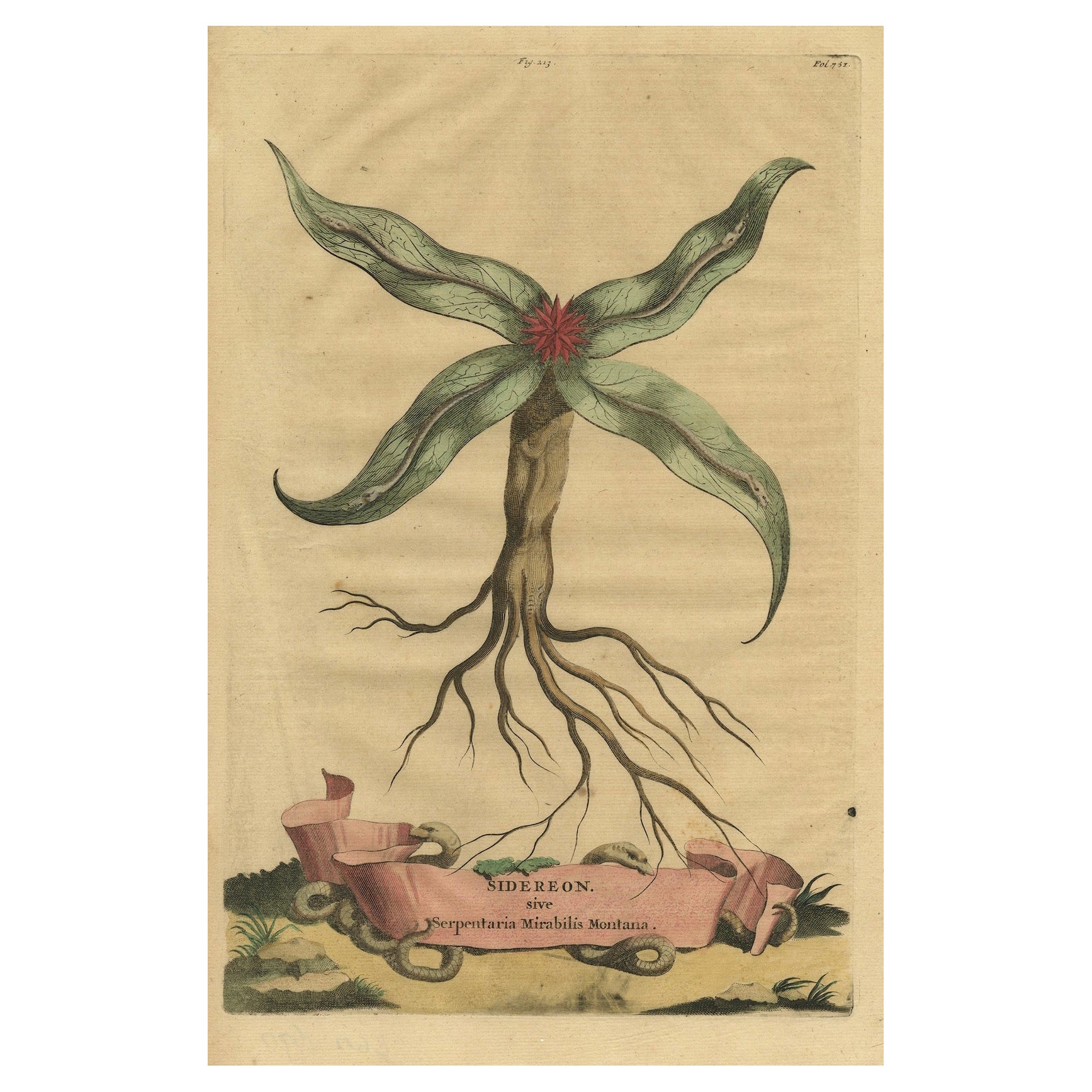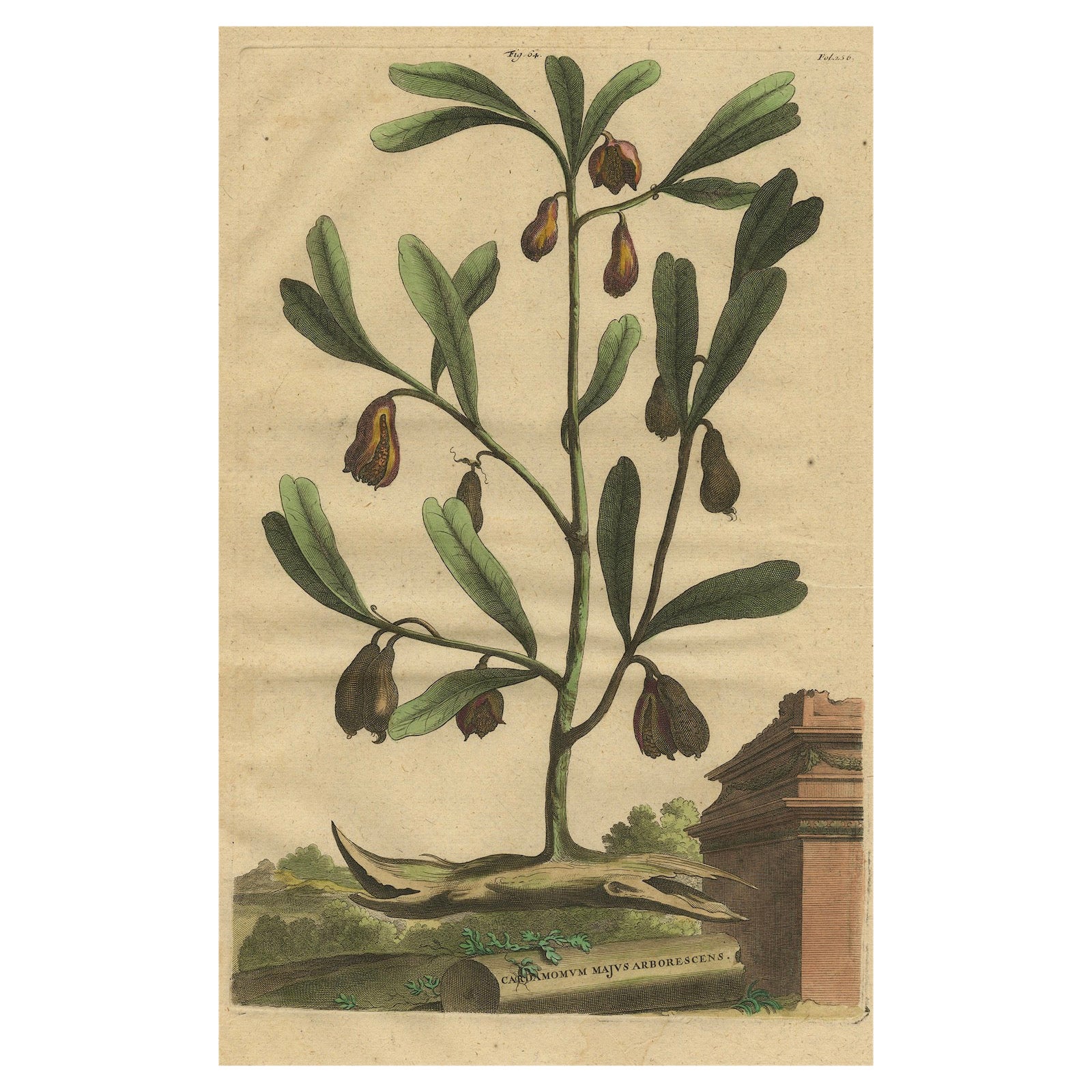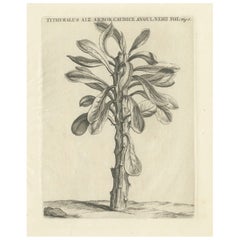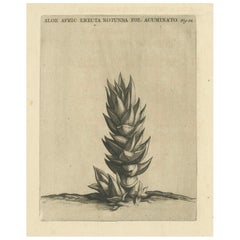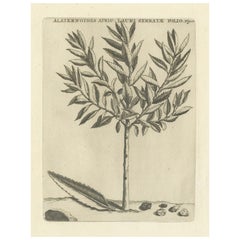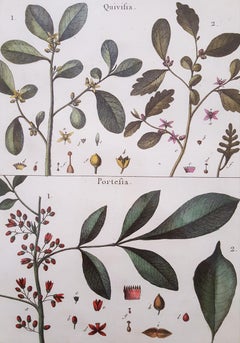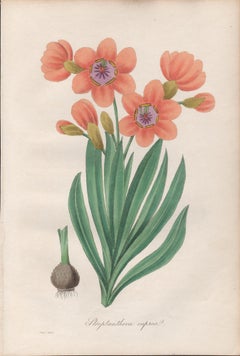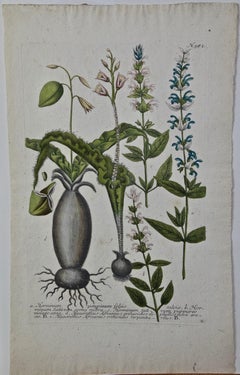Items Similar to Botanical Illustration of Saint Lawrence's (Madagascar) Seeds and Plants, 1601
Want more images or videos?
Request additional images or videos from the seller
1 of 7
Botanical Illustration of Saint Lawrence's (Madagascar) Seeds and Plants, 1601
$481.16
$601.4520% Off
£360.16
£450.2020% Off
€408
€51020% Off
CA$662.21
CA$827.7620% Off
A$738.10
A$922.6320% Off
CHF 387.26
CHF 484.0720% Off
MX$9,013.43
MX$11,266.7920% Off
NOK 4,903.51
NOK 6,129.3920% Off
SEK 4,634.57
SEK 5,793.2120% Off
DKK 3,105.98
DKK 3,882.4820% Off
About the Item
"Botanical Illustration of Saint Lawrence's Seeds and Plants by De Bry, 1601"
Description: This engraving from Theodore de Bry's collection, produced in 1601, features a botanical study of various seeds and plants native to the island of Saint Lawrence, also known as Madagascar. Each plant is meticulously rendered with Latin letters corresponding to a legend that identifies them. This careful study was part of De Bry’s extensive work to document and illustrate the flora and fauna encountered by European explorers during their voyages to exotic lands.
The illustration captures the diverse plant life from the island, from the bulbous shapes of the roots in the foreground to the towering forms of the trees in the background. The detail in the image reflects the European fascination with new and foreign natural history, a subject that was growing in popularity and significance during the Age of Exploration. De Bry's works served not only as scientific records but also as means to captivate and educate his contemporaries about the wonders of the natural world.
Translation of the Latin text:
"There is a certain tree, its summit dividing into the smallest of branches. From this, the Chaonas nuts are collected. B. The House of Holland has a frequent abundance of them. They were called by the local language Blatterlos, which, even if it lacks leaves, prefers the same. The seed always produces what is similar. C. The fruit is called Giant Calamus. D. The straws are called Sippetes, which have very thin, long stalks and are acidic in taste. E. Sugar cane in the island of St. Maria is remarkable because it can produce sugar without the process of boiling."
The engraving is a page from Part IV of de Bry's "Petits Voyages," which narrates significant expeditions to the East Indies, including those led by Jan Juygen van Linschoten and Cornelis de Houtman between 1595-97, as well as the journey by Jacob van Neck and Wybrandt van Warwijck in 1598-99. These works were not merely artistic endeavors but also ethnographic records, showcasing indigenous peoples, fauna, flora, and the diverse riches of lands like India, Madagascar, and the East Indies.
Though Theodore de Bry began this ambitious project, it was continued posthumously by his family and later completed by his son-in-law, Matthaus Merian, in 1644. This particular engraving, rich in detail and drama, offers a window into the perilous and wondrous experiences of early explorers, and the ways in which these moments were captured and communicated to a European audience hungry for knowledge of the wider world.
- Dimensions:Height: 11.82 in (30 cm)Width: 7.88 in (20 cm)Depth: 0 in (0.02 mm)
- Materials and Techniques:Paper,Engraved
- Period:Early 17th Century
- Date of Manufacture:1601
- Condition:The condition of the print is good, considering its age of over 400 years. Light brownish toning and foxing and some soiling due to handling, mainly around the edges. One larger brown spot in the image. Please study this image carefully.
- Seller Location:Langweer, NL
- Reference Number:Seller: BG-13596-211stDibs: LU3054337756522
About the Seller
5.0
Recognized Seller
These prestigious sellers are industry leaders and represent the highest echelon for item quality and design.
Platinum Seller
Premium sellers with a 4.7+ rating and 24-hour response times
Established in 2009
1stDibs seller since 2017
2,513 sales on 1stDibs
Typical response time: <1 hour
- ShippingRetrieving quote...Shipping from: Langweer, Netherlands
- Return Policy
Authenticity Guarantee
In the unlikely event there’s an issue with an item’s authenticity, contact us within 1 year for a full refund. DetailsMoney-Back Guarantee
If your item is not as described, is damaged in transit, or does not arrive, contact us within 7 days for a full refund. Details24-Hour Cancellation
You have a 24-hour grace period in which to reconsider your purchase, with no questions asked.Vetted Professional Sellers
Our world-class sellers must adhere to strict standards for service and quality, maintaining the integrity of our listings.Price-Match Guarantee
If you find that a seller listed the same item for a lower price elsewhere, we’ll match it.Trusted Global Delivery
Our best-in-class carrier network provides specialized shipping options worldwide, including custom delivery.More From This Seller
View AllBotanical Engraving of Tithymalus Aiz Arbor from Caspar Commelin’s Work, 1706
Located in Langweer, NL
Botanical Engraving of Tithymalus Aiz Arbor from Caspar Commelin’s Work, 1706
This engraving is possibly a botanical illustration from Caspar Commelin's "Praeludia Botanica," publis...
Category
Antique Early 1700s Prints
Materials
Paper
$273 Sale Price
20% Off
Botanical Engraving of Aloe Afric Erecta from Caspar Commelin's Work, 1706
Located in Langweer, NL
Botanical Engraving of Aloe Afric Erecta from Caspar Commelin's Work, 1706
This engraving is likely a botanical illustration from Caspar Commelin's "Praeludia Botanica," published i...
Category
Antique Early 1700s Prints
Materials
Paper
$273 Sale Price
20% Off
Botanical Study of Various Plant Structures in an Original Engraving, 1803
Located in Langweer, NL
Botanical Study of Various Plant Structures
This engraving is from the publication "Flora Londinensis," an illustrated work detailing the flora found around London. The specific pla...
Category
Antique Early 1800s Prints
Materials
Paper
$132 Sale Price
20% Off
Botanical Engraving of Alaternoides Afric Lauri Serratae from Commelin, 1706
Located in Langweer, NL
Botanical Engraving of Alaternoides Afric Lauri Serratae from Caspar Commelin, 1706
This engraving is possibly a botanical illustration from Caspar Commelin's *"Praeludia Botanica,"...
Category
Antique Early 1700s Dutch Prints
Materials
Paper
$256 Sale Price
25% Off
Botanical Engraving of Arrowhead from Munting’s 1696 Herbal Collection
Located in Langweer, NL
This original old hand-coloured antique print depicts Sagittaria Sagittifolia, known as "arrowhead." It originates from the botanical work "Naauwkeurige Beschryving der Aardgewassen"...
Category
Antique 1690s Prints
Materials
Paper
$320 Sale Price
20% Off
Botanical Illustration of Cardamom Plant (Cardamomum majus arborescens) , 1696
Located in Langweer, NL
This antique print, titled "Cardamomum majus arborescens," illustrates the Cardamom plant, known for its aromatic seeds, which are commonly used as a spice in both culinary and medic...
Category
Antique 1690s Prints
Materials
Paper
$415 Sale Price
20% Off
You May Also Like
Quivisia; Portesia /// Antique Botanical Botany Plants Science Engraving Buffon
By Georges-Louis Leclerc, Comte de Buffon
Located in Saint Augustine, FL
Artist: Georges-Louis Leclerc, Comte de Buffon (French, 1707-1788)
Title: "Quivisia; Portesia" (Octandreie, Monogynie, Plate 302)
Portfolio: Histoire Naturelle
Year: 1749-1789
Medium: Original Hand-Colored Engraving on laid paper
Limited edition: Unknown
Printer: Imprimerie Nationale, Paris, France
Publisher: Georges-Louis Leclerc, Comte de Buffon, Paris, France
Framing: Not framed, but beautifully double matted with hand decorated archival French matting...
Category
2010s Naturalistic Still-life Prints
Materials
Watercolor, Engraving, Laid Paper, Intaglio
Citamerdu (Amrita) Plant: 17th Century Botanical Engraving by Hendrik van Rheede
Located in Alamo, CA
This is a rare 17th century engraving of a plant entitled "Citamerdu" by the Dutch botanist Hendrik van Rheede tot Drakenstein, plate 21 from his 'Hortus Indicus Malabaricus' (Garden of Malabar), published in Amsterdam in 1686 by Johann van Someren. The engraving depicts the Citamerdu plant, also known as Tinospora cordifolia plant or Amrita and Guduchi. It is a deciduous plant with heart-shaped leaves, greenish flowers, and pea-shaped fruits. Rheede's 19th century publication featured illustrations of exotic plants and fruits labelled with script in the upper right corner in Latin, Malay, Arabic, and Sanskrit. Hortus Indicus Malabaricus is believed to be the earliest comprehensive published work on the flora of Asia and the tropics. The 17th century treatise featured important illustrations of 740 plants of the region, including Indian medicinal plants.
The engraving is printed on 17th century laid, chain-linked paper, watermarked with an elaborate crown design. The sheet measures 15.75" high by 18.75" wide. There is a central fold, as issued. There are a few small spots, but the print is otherwise in excellent condition.
There are additional Rheede botanical engravings from his 'Hortus Indicus Malabaricus' publication that are listed on my 1stdibs storefront and online website. These would make for an impressive display grouping. A discount is available for purchase of two or more of the prints.
Hendrik Adriaan van...
Category
Late 17th Century Naturalistic Landscape Prints
Materials
Engraving
Streptanthera cuprea, antique botanical flower engraving
Located in Melbourne, Victoria
Engraving with original hand-colouring. 1834. 230mm by 155mm. From Paxton's 'Magazine of botany and register of flowering plants' by Sir Joseph Paxton.
Category
Mid-19th Century Naturalistic More Prints
Materials
Engraving
Flowering Dragonmouth: 18th Century Hand-colored Weinmann Botanical Engraving
By Johann Wilhelm Weinmann
Located in Alamo, CA
An 18th century hand colored botanical engraving by Johann Wilhelm Weinmann (1683-1741) depicting the following flowering sage plants:...
Category
Mid-18th Century Naturalistic Still-life Prints
Materials
Engraving, Mezzotint
Set of 4, 17th Century Botanical Engravings by Jan and Caspar Commelin
Located in Gloucestershire, GB
Beautiful set of 4, 17th century botanical engravings by Jan and Caspar Commelin.
Presented in silver frames with hessian mounts and AR70 Artglass for optimal clarity.
Jan Commelin...
Category
Antique 17th Century Dutch Prints
Materials
Paper
Antholyza Fulgens. Henry Andrews antique botanical flower engraving print
By Henry C Andrews
Located in Melbourne, Victoria
'Antholyza Fulgens - Refulgent-flowered Antholyza'
Original copper-line engraving with original hand-colouring from Henry Andrews' 'The Botanist's Repository', 1797-1812. Accompani...
Category
Early 19th Century Naturalistic Still-life Prints
Materials
Engraving
More Ways To Browse
Syria Jewelry
Tall Mid Century Modern Buffet
Tall Narrow Shelves
Tamil Nadu
Terracotta Sink
Thai Bamboo
Thai Dragons
Thai Statue Wood
Tibetan Buddha Statue
Tiffany Glass Mirror
Tin Horse
Tubular Chrome Shelf
Unglazed Clay Jar
Used Metal Storage Bins
Vaseline Uranium Glass
Versaille Urns
Vintage 329
Vintage Banana Leaf
